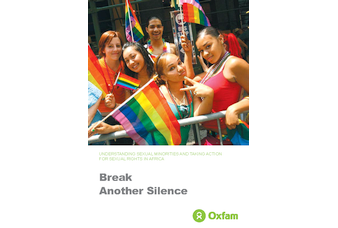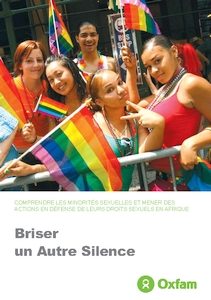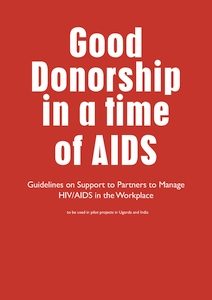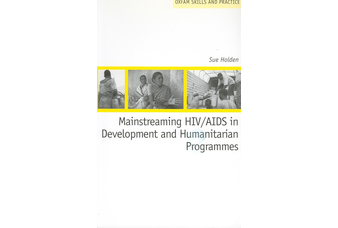Break Another Silence: Understanding Sexual Minorities and Taking Action for Sexual Rights in Africa
This booklet is about marginalised sexualities and human rights and is also available in French.
In a context of widespread homophobia and misinformation, it aims to give Oxfam’s and other NGOs’ staff both facts and food for thought about alternative sexualities. It’s written for people working in civil society and government organisations, with a focus on Africa, particularly the Horn, East, and Central Africa.
Extract
The idea for this booklet came from an HIV and AIDS forum, held in the Horn, East & Central Africa region, for Civil Society Organisation (CSO) staff working on HIV. The forum focussed on learning about linkages between gender, HIV & AIDS, and sexual rights. Two East African activists from a sexual minorities network spoke about how badly sexual minorities are treated, the violence and discrimination they experience, and the difficulties they face in accessing HIV and AIDS prevention, treatment & care services. Their testimonials stirred the participants’ interest. Some felt that they needed to know more. Many were surprised; they were working on HIV, and yet had not given much thought to sexual minorities. Some, perhaps, felt negative towards the two activists, a common reaction in African cultural settings. Others wondered how they and their organisations might support sexual minorities to claim their rights.
This booklet is to encourage staff in civil society and government organisations to: understand sexual rights as human rights; to become aware of the ongoing abuses of sexual minorities’ human rights including lack of access to essential services; and to take action to protect rights for all, including minority groups.
Chapter 1 focuses on basic information and key debates. Chapter 2 looks at reactions to sexual minorities and their sexual rights. The linkage between sexual minorities, human rights and HIV programming is explored in Chapter 3, while Chapter 4 deals with why most NGOs have been silent on the issue. The concluding chapter suggests ways to break that silence.










